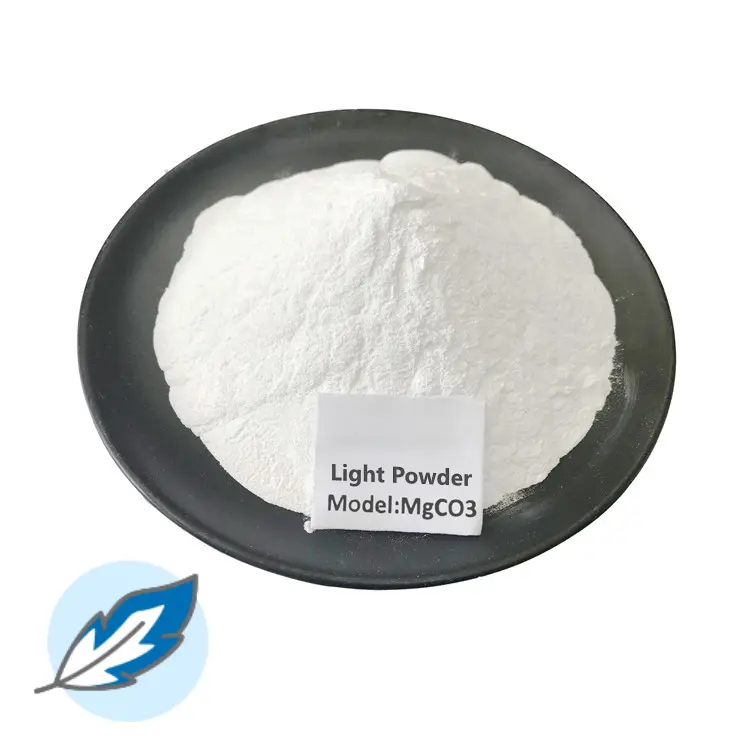Hebei Messi Biology Co., Ltd. stated that anhydrous magnesium carbonate particles with an average particle size of 1.267 μm are prepared from light-burned powder as raw material through digestion, carbonization, heavy magnesium water decomposition, and hydrothermal steps. The process first uses light-burning The powder is digested with water to generate a magnesium hydroxide slurry of a certain concentration. Carbon dioxide is introduced into the slurry for carbonization reaction to generate heavy magnesium water. The heavy magnesium water is decomposed to produce MgCO3·3H2O precursor. Sodium bicarbonate is used as a crystal transformation accelerator. , anhydrous magnesium carbonate particles can be obtained under hydrothermal conditions of 160°C and 1 hour. This system has no value-added by-products, and the experimental hydrothermal additives, carbon dioxide and water can be recycled. It has a small impact on the environment and is a green process route.
First, an electrochemical method is used to use pure magnesium as the anode and an inert element electrode as the cathode. Metal alkoxide (electrolyte) is prepared through electrolysis reaction, and then urea is used as the precipitant to hydrothermally prepare anhydrous magnesium carbonate powder. This method is to prepare a solution of ethanol and water in a certain proportion, add urea to the solution, and perform hydrothermal treatment to obtain ideal and regular anhydrous magnesium carbonate particles. As the reaction temperature and hydrothermal time increase, the microscopic shape of the flaky particles changes. The appearance gradually becomes more complete, and as the alcohol-to-water ratio increases, the size of the particles also increases significantly.
Using urea and magnesium chloride as reaction raw materials and sodium citrate as accelerator, a flower-shaped anhydrous magnesium carbonate composed of willow leaf petals with good dispersion was prepared by hydrothermal reaction at 160°C for 24 hours.
Use self-made magnesium carbonate trihydrate as raw material, put magnesium carbonate trihydrate into a polytetrafluoroline-lined reactor, add ammonium chloride solution, stir for 5 minutes, put it into a stainless steel autoclave, react under certain conditions to prepare anhydrous carbonic acid Magnesium, in the early stage of the reaction, the product is 4MgCO3·Mg(OH)2·4H2O with a lamellar structure. As the reaction time increases, the lamellar structure in the product gradually disappears and is converted into massive anhydrous magnesium carbonate. This study shows , the addition of ammonium chloride promotes the heterogeneous conversion of anhydrous magnesium carbonate. Basic magnesium carbonate quickly nucleates on the surface of magnesium carbonate trihydrate. The nucleation speed is greater than the crystallization speed of the product. Therefore, magnesium carbonate trihydrate is converted into anhydrous magnesium carbonate. The speed of hydrated magnesium carbonate is fast, which shortens the reaction time. The introduction of inorganic salts improves the polarity of the system. Anhydrous magnesium carbonate is an ionic crystal. The reaction process involves a dissolution and crystallization process. According to the principle of similar miscibility, the polarity of the system is Improved sex helps improve reaction speed.
Using different magnesium salts as the magnesium source and urea as the precipitant, anhydrous magnesium carbonate crystals can be prepared from urea and different magnesium sources under hydrothermal conditions of 160°C. This experiment used magnesium powder, magnesium hydroxide, magnesium chloride, magnesium sulfate, and magnesium oxide as magnesium sources, and explored the effects of raw material ratio, time, and reaction temperature on the preparation of magnesium carbonate. Research shows that when the temperature is higher than 160°C, the product will convert to anhydrous magnesium carbonate. When the temperature is around 100°C, the product obtained is Mg5(CO3)4(OH)2·4H2O or Mg(OH)2. When the reaction When the reaction time reaches 30h, the only product is anhydrous magnesium carbonate. When the reaction time reaches 10h, the product obtained is a mixture of Mg5(CO3)4(OH)2·4H2O, Mg(OH)2 and MgCO3. When the reaction time is 20h, it is still the same. Mgs(CO3)4(OH)2·4H2O and Mg(OH)2 are present, but the content of magnesium carbonate is increased.
Experiments show that the particle size of the product is related to the type of magnesium source. When the reactants are MgCl2·6H2O and MgO, the particle size of the product under the same conditions is 1-10 μm. When the reactants are MgSO4·7H2O and Mg(OH)2, The product particle size is 1-2 μm. Among them, the experimental reaction mechanism using magnesium powder as the magnesium source is as follows: Mg first reacts with water to generate H2 and Mg(OH)2, and urea is hydrolyzed in an alkaline environment. Mg2, OH, CO32+, and NH4* follow the hydrothermal conditions An increase in temperature results in conversion to anhydrous magnesium carbonate.
Hebei Messi Biology Co., Ltd. stated that the use of hydrothermal method to prepare anhydrous magnesium carbonate has the advantages of high product purity, good crystallinity, regular morphology, and less agglomeration. This is also the method used by most production technologies at home and abroad.

